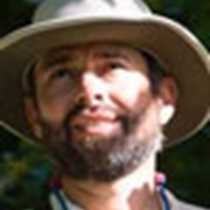Osa Península, Costa Rica
During our trip we have explored different kinds of tropical ecosystems, including mangrove swamps, coral reefs and various tropical ecosystems, but today’s stop was one of a kind.
Today we explored the tropical rain forest of the Osa Peninsula of Costa Rica, which is not only beautiful, but one of the larger sized ones and most pristine of all preserved in Central America. It is one of the pieces of forest large enough to still harbor big animals such as jaguars, tapirs, big forest eagles, spider monkeys and many others of smaller dimensions.
Osa Peninsula has been able to keep and save this forest due to its very remote and difficult to access location; which still now days you can only get to by boat or small planes. Most Costa Ricans have never set foot on this place. Today we were fortunate to explore this unique place, what a treat! During the first part of the morning we explored a privately owned wildlife refuge in which we splintered off in a series of short and long hikes and, some of the most adventurous ones, on horseback ride. We did not see a jaguar or tapir, but got to see many birds and mammals, of which the stars were a couple of scarlet macaws feeding on the fruit of an almond beach tree. They were so focused eating, that they didn’t seem to care much about us. To make it an even more special day, tamandua or collared anteater happen to show up right at our beach station.
After a great barbecue lunch right on the beach courtesy of our crew, the ship repositioned to another protected area in the peninsula. Before we reached our anchorage destination, a mother humpback whale and her very young calf appeared right on our starboard side, and we had the unique chance to enjoy their very seasonal presence in this area. Once again on our tracks, we were ready to go on some more trails of magical pristine forest. This time it was none other than Corcovado National Park. Here again we had several choices for walking, some of us took the way to a waterfall with the opportunity to swim in its water hole, and others went on the short hikes looking for wildlife.




